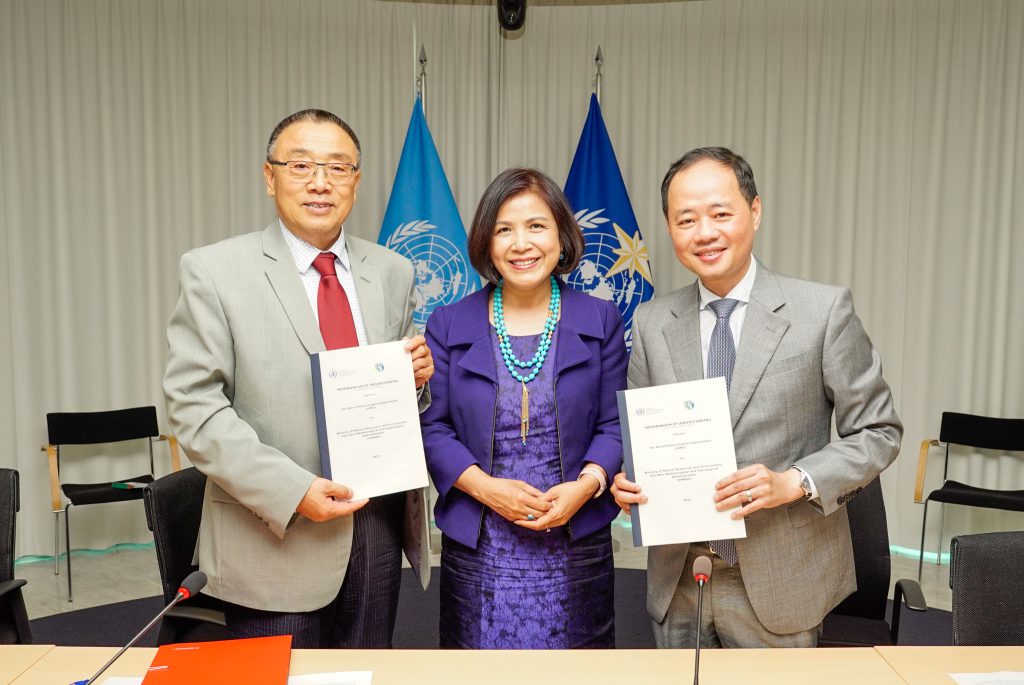

Source: World Meteorological Organisation (WMO)
Southeast Asia Flash Flood Guidance System Aims to Improve Warnings
The Southeast Asia Flash Flood Guidance System (SeAFFGS), which aims to improve early warnings for flash floods in the area, was officially launched by the World Meteorological Organization (WMO).
The Vietnam Meteorological and Hydrological Administration (VNMHA) will operate the SeAFFGS and provide effective flash flood guidance and forecasts within Vietnam. VNMHA will also act as a regional center covering Cambodia, Lao PDR, and Thailand, providing forecast products, data, and training.

Source: World Meteorological Organisation (WMO)
According to Hwirin Kim, Head of Hydrological and Water Resources Services Division at WMO, Southeast Asia is severely affected by flash floods and landslides during the rainy season. This is the reason behind the system’s construction in Southeast Asia. With aiding of the system, Southeast Asian nations will be strengthened their capacity to provide landslide and flash flood warnings, so assisting in reducing the negative effects of natural disasters.
SEAFFGS uses a new and modern technology model which developed by WMO, with the cooperation of other nations such as the United States, Canada, and Southeast Asian countries. It is the first flash flood warning system that incorporates numerous data sources from Southeast Asian nations and uses extremely short forecast data.
Vietnam contributes and shares data from 10 radars, 1,500 automatic rain-observing stations, administrative maps of districts, communes, and ultra-short forecast products to the system in order to forecast rainfall for countries in the region.
Flash floods are distinct from river floods in that they occur quickly and often on smaller spatial scales, which makes forecasting them more challenging than forecasting large-river floods.
The World Meteorological Organization (WMO) stated, “In forecasting flash floods, we are primarily concerned with the forecast of occurrence, and here focus on two causative events:
1) Intense rainfall; and
2) Rainfall on saturated soils.
“Flash floods occur all over the world, and depending on the land surface, geomorphological, and hydrometeorological characteristics of the areas, the development times vary across areas from minutes to several hours. However, there is not a formal procedure in place, and it is impossible to create flash flood warnings in the majority of these areas.”
Each year, flash floods cause hundreds of fatalities and have significant negative social, economic, and environmental effects. Due to its tropical monsoon environment, Southeast Asia is one of the areas most frequently hit by natural catastrophes like floods, flash floods, and landslides. Predicting flash floods accurately and timely allows the designated national authorities to take the necessary precautions to safeguard the public from their disastrous effects. The creation and use of a flash flood forecasting system are widely acknowledged to significantly improve public safety.
References
[1]”Southeast Asia Flash Flood Guidance System Launched”, World Meteorological Organization, 2022. [Online]. Available: https://public.wmo.int/en/media/news/southeast-asia-flash-flood-guidance-system-launched.
[2]F. News, “Introduction of Southeast Asia Flash Flood Guidance System Aims to Improve Warnings – FloodList”, Floodlist.com, 2022. [Online]. Available: https://floodlist.com/asia/southeast-asia-flash-flood-guidance-system.
[3]”VN launches Southeast Asia Flash Flood Guidance System, assumes regional hub forecasting role”, vietnamnews.vn, 2022. [Online]. Available: https://vietnamnews.vn/society/1254532/vn-launches-southeast-asia-flash-flood-guidance-system-assumes-regional-hub-forecasting-role.html.
